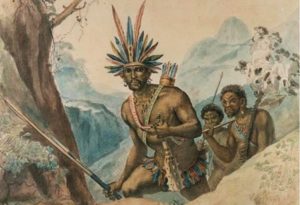Growing up in Africa, I had the privilege of being surrounded by a rich tapestry of culture and tradition. One aspect of African heritage that always fascinated me was tribal art. From the intricate patterns to the symbolic depictions, African tribal art is a treasure trove of history, stories, and cultural significance. In this blog post, I want to delve deeper into the world of African tribal art, exploring its symbols, history, and lasting influence.

Symbols in African tribal art serve as a unique language, communicating the beliefs, values, and traditions of different tribes. Each symbol carries a specific meaning, expressing ideas that are deeply rooted in African spirituality and mythology. For example, the Adinkra symbols used by the Akan people of Ghana are renowned for their intricate patterns and profound significance. The Gye Nyame symbol, shaped like an intricately woven knot, represents the omnipotence of God. It serves as a reminder to individuals that they are not the center of the universe, but rather, a part of a greater cosmic order.
Another fascinating aspect of African tribal art is its history, which stretches back thousands of years. Many of these art forms have been passed down through generations, preserving the traditions and beliefs of African tribes. From wood carvings to colorful textiles, African art encompasses a wide range of mediums. One of the oldest forms of tribal art is rock paintings, which can be found in various parts of Africa, dating back to prehistoric times. These paintings provide a glimpse into the everyday lives of our ancestors, depicting scenes of hunting, dancing, and communal gatherings.
African tribal art also reflects the interconnectedness between humans and nature. Nature has always played a significant role in African tribal cultures, and this is evident in their art. Animals, in particular, are often depicted in tribal art as they represent various qualities and characteristics. The lion, for example, symbolizes courage and leadership, while the elephant is a symbol of strength and wisdom. Through these depictions, African tribal art portrays the harmonious relationship between humans and the natural world.
The influence of African tribal art extends far beyond its cultural origins. Over the years, artists and designers from around the world have been captivated by its beauty and complexity, incorporating elements of tribal art into various forms of contemporary art. From fashion to interior design, African tribal motifs have found their way into the global mainstream, adding a touch of exoticism and cultural richness. This influence has sparked a renewed interest in African tribal art, allowing it to thrive and evolve in new and unexpected ways.
Moreover, African tribal art has also become a means of cultural preservation and economic empowerment. Many African artists and artisans have turned to their ancestral traditions, using tribal art as a way to showcase their heritage and support their communities. By creating and selling traditional art pieces, these artists not only help preserve their cultural legacy but also contribute to local economies. This resurgent interest in African tribal art has breathed new life into ancestral techniques and craftsmanship, ensuring their continuation for future generations.
In conclusion, African tribal art is a captivating world of symbols, history, and influence. It serves as a visual language that communicates the beliefs and values of African tribes, preserving their rich cultural heritage. From the intricate patterns to the depiction of animals and nature, each piece of tribal art tells a story, connecting us to our past and our roots. As its influence spreads globally, African tribal art continues to inspire and captivate, representing a celebration of diversity and cultural exchange.











